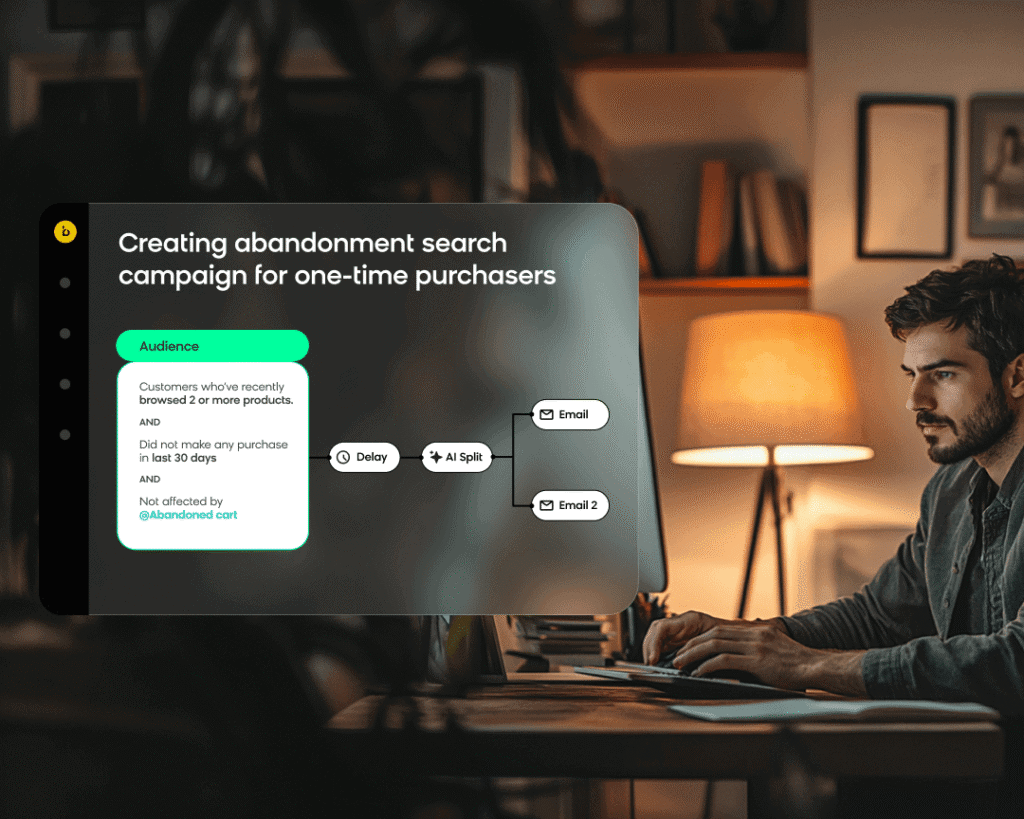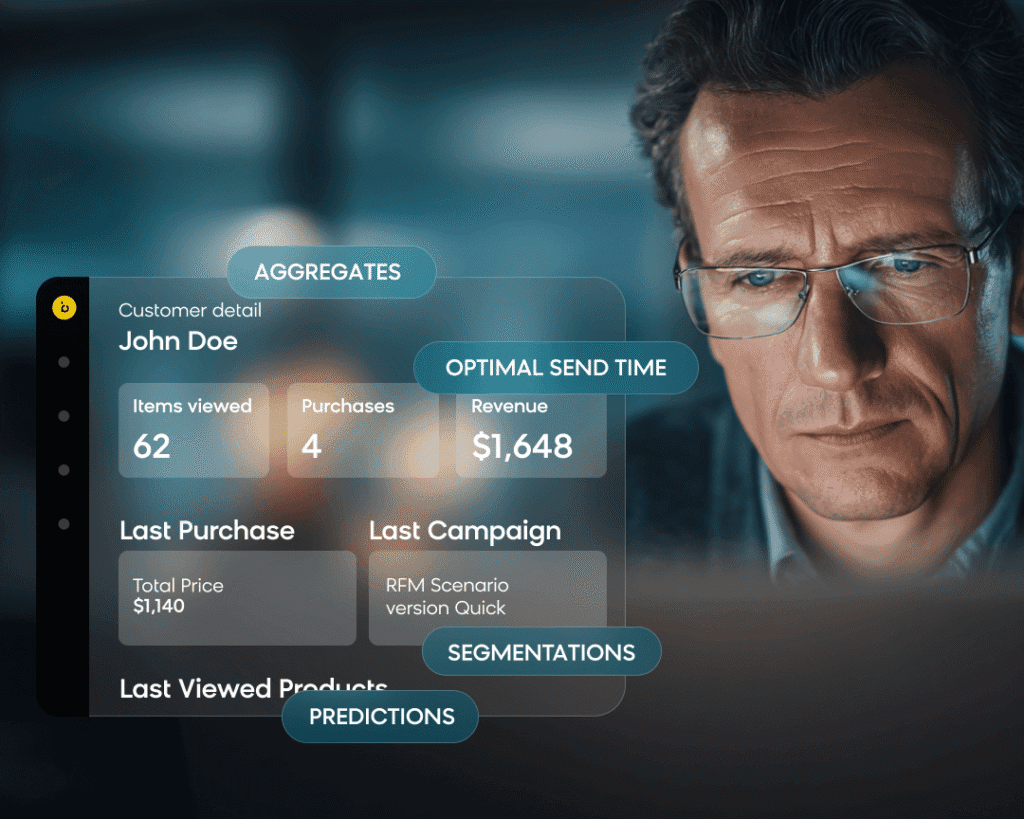There’s been a philosophical debate of sorts happening on how to build AI agents. As more brands embrace the power of agentic AI, there’s a fundamental split on how to architect such systems.
On the one hand, companies like OpenAI are advocating for fully dynamic agentic architecture. Meanwhile, companies like Anthropic and LangChain (and Bloomreach as well) support having a more flexible approach between dynamic agents vs. static workflows.
So, is one actually better than the other? In this post, I’ll explain the difference between the two camps, as well as explore the reasons why we’re in favor of a more flexible architecture at Bloomreach.
What Are Agentic Workflows?
To understand static workflows vs. dynamic agent architectures, let’s first define AI agents. Agents are systems that are capable of autonomously accomplishing complex tasks by thinking, making decisions, and then executing actions (e.g., sending out an email or making a phone call).
However, how autonomously they go about going through these steps is where we see a divide. One method is to let these agents be more dynamic and autonomous, where they are given free rein to determine all the steps required to accomplish a goal. The other method is through human engineers defining an agentic workflow, by which the agent has a predefined path needed to carry out the task (for example, think of a state transition diagram).
So, as an example, with an agentic workflow for marketing, we can set it so that the AI agent first asks the marketer what they’d like to do. Once the agent receives a prompt (e.g., “Create an abandonment browse campaign for one-time purchasers”), the flow is then programmed to ask for agreement on the campaign brief. After the marketer approves the brief, the agent will tap other predetermined agents to help — one to build a program, another to create the content, etc. Each agent will work autonomously, but will follow a set procedure before returning to the marketer with the completed flow.
On the other end of the spectrum, there’s the “one model to rule them all” philosophy. Essentially, these agentic systems are merely thin wrappers around the LLM and will query the LLM to come up with a set of steps to think and execute. In this architecture, all the “value” is within the model itself. So, the model may receive the initial prompt for the abandonment browse campaign, but the steps that are taken from the initial prompt to the final building of the campaign and execution are determined by multiple queries to the LLM to create a dynamic set of steps for each task. This may include creating a brief, determining what steps to take, and how to delegate the tasks among the agents.
A Clarification on Agentic Workflows vs. Marketing Workflows
In a previous post, I talked about how we’re using AI agents to completely replace marketing workflows. This is still true. The current debate around workflows vs. fully autonomous applies to the architecture of how agents accomplish the creation of marketing automation, which doesn’t affect the output of such automation flows for practitioners.
This will allow marketers to move away from thinking about how to build marketing automation workflows and instead focus on a high-impact strategy instead of tinkering with a no-code platform to build automation.
Why Do We Favor a Flexible Hybrid Approach?
While it’s understandable that there’s enthusiasm around letting agents be fully dynamic, I also see several areas of concern with this approach.
The first is that agentic AI is still in its infancy. That means we can’t predict what it’ll do, and whether it’ll do everything correctly. It’s like giving a kid $100 to buy you groceries and providing no further instructions. Maybe they’ll buy exactly what you want, but there’s also a chance they’ll buy way too much candy.
By adding human-defined structure, we can ensure that the LLMs don’t deviate from that structure and that they’ll stay on task. This represents a more balanced approach of using a hybrid of workflows and LLM calls — a stance that’s also supported by both Anthropic and LangChain.

Another concern is around reliability and trust. Because agentic AI is still so new, we can’t fully trust it to not make mistakes. One mistake and human operators will lose trust in the system. And because we’re committed to building great experiences for our customers (and their shoppers), we can’t afford to have that margin of error.
If there’s still even a 1% chance that the agent may get things wrong, this would be a problem. By implementing some static workflows, we’re able to significantly improve accuracy and reliability. While the AI agents are still providing value by making decisions and generating automation programs, we make sure that they can’t completely go off the rails.
Bringing Agentic Workflows to Marketing Automation
Ultimately, we believe that some defined static workflows programmed by developers are currently still necessary to bring forth the best outcomes for agentic systems. While it’s easy to build a dynamic architecture agent using only a thin layer on top of an LLM for a limited demo, it’s a different story when it comes to production-grade business-critical applications.
In the end, we’re always keeping a close eye on the latest developments, and we’re constantly evaluating our architectural choices to ensure our agentic systems add value as LLMs evolve. You can see this value in action with our work on autonomous marketing — see how our agentic systems deliver value by watching the on-demand recap of our Innovation Fest.













